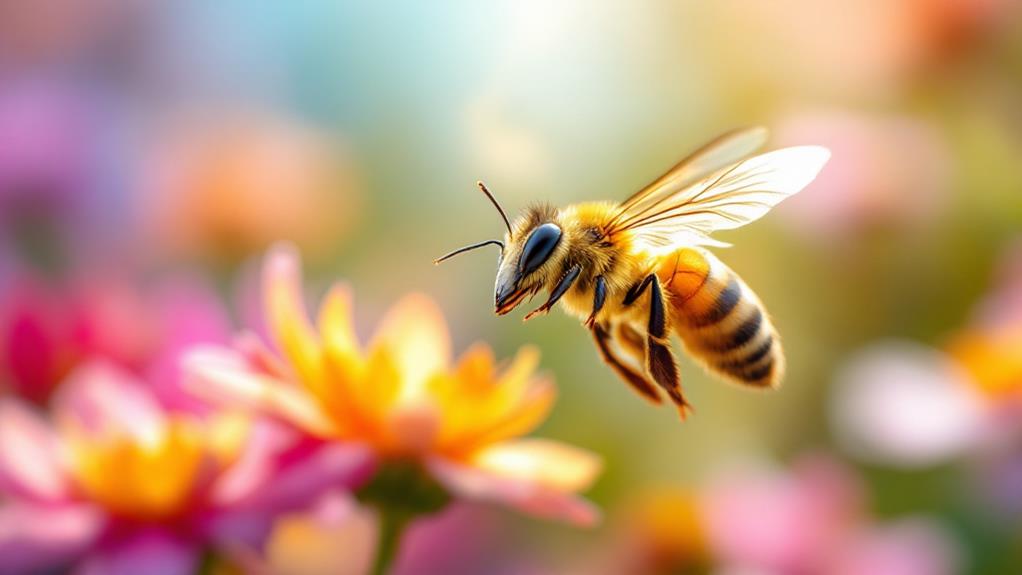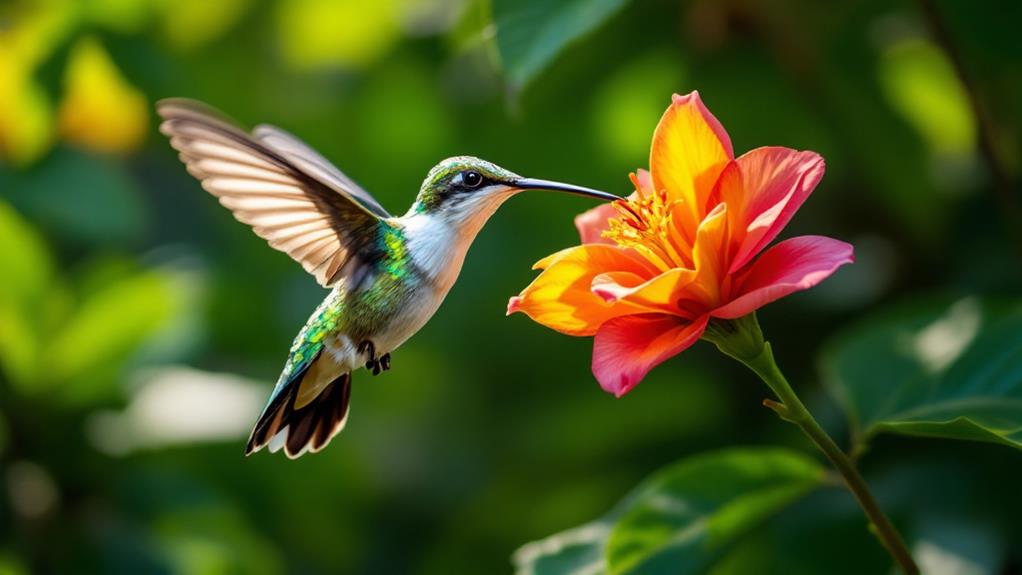Interesting Facts About Birds: Discover the Wonders of Avian Life
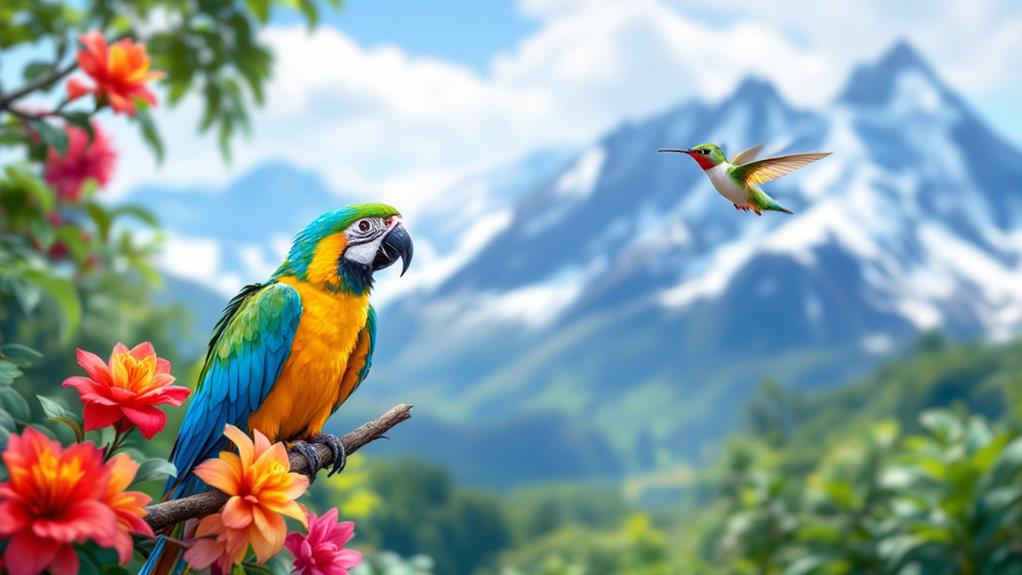
Birds are nature's true marvels, boasting extraordinary adaptations that'll leave you in awe. You'll be amazed by their ultraviolet vision, allowing them to see colors invisible to humans. Their flight abilities are unparalleled, with hummingbirds capable of hovering and flying backward. Birds' intelligence might surprise you, as crows can solve complex puzzles and parrots understand abstract concepts. Their nesting behaviors are equally fascinating, from bowerbirds' elaborate courtship structures to hornbills' unique sealed nests. Exquisite plumages and diverse communication methods, including mimicry and aerial dances, further showcase birds' incredible diversity. Inspect these feathered wonders, and you'll uncover a world of avian marvels waiting to be uncovered.
Extraordinary Avian Adaptations
Over millions of years, birds have developed some truly astonishing adaptations. You'll be amazed by their unique sensory perception capabilities, which allow them to traverse vast distances during migration and locate food with incredible precision. Many species possess ultraviolet vision, enabling them to see colors invisible to the human eye. This enhanced sight aids in identifying ripe fruit, potential mates, and even predators.
Birds' foraging strategies are equally impressive. Some species, like woodpeckers, have evolved specialized beaks and tongues to extract insects from tree bark. Hummingbirds can hover in place and fly backwards, thanks to their unique wing structure, allowing them to access nectar from flowers efficiently. Seabirds like pelicans have developed expandable throat pouches to scoop up fish, while herons use their long, sharp beaks to spear prey in shallow waters.
You'll find that birds' adaptations extend beyond feeding. Their lightweight, hollow bones and streamlined bodies make flight possible, while some flightless birds have developed powerful legs for running or swimming. These extraordinary adaptations showcase nature's ingenuity in equipping birds for survival in diverse environments.
Remarkable Flight Abilities
Birds' adaptations have paved the way for their most iconic ability: flight. You'll be amazed by the incredible ways they've mastered the skies. Their lightweight bones, powerful muscles, and efficient respiratory systems allow them to soar effortlessly through the air.
Watch closely, and you'll notice their nimble wing movements. Birds can adjust their wings mid-flight, enabling them to navigate through complex environments with ease. Some species, like hummingbirds, can even hover in place or fly backward.
Birds' streamlined body shapes contribute significantly to their flying prowess. Their aerodynamic forms reduce air resistance, allowing them to cut through the air efficiently. From the pointed beaks of swifts to the torpedo-shaped bodies of penguins (adapted for "swimming" underwater), each species' unique shape optimizes its flight capabilities.
You'll find that different bird species have developed specialized flight techniques. Albatrosses use dynamic soaring to cover vast ocean distances, while eagles employ thermal currents to gain altitude with minimal effort. These exceptional abilities showcase the diversity and ingenuity of avian flight adaptations.
Unexpected Bird Intelligence
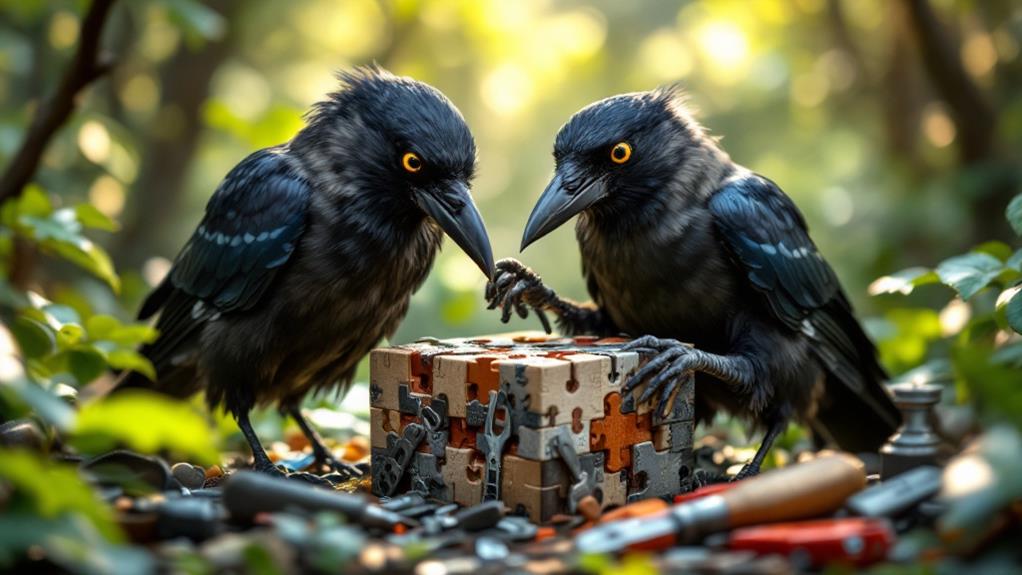
You might be surprised to learn that birds possess extraordinary cognitive abilities. Their intelligence goes far beyond simple instinct, demonstrating exceptional problem-solving skills and innovative foraging strategies. Many species have shown the capacity to use tools, recognize themselves in mirrors, and even understand complex concepts like object permanence.
Birds' problem-solving skills are particularly impressive. Crows, for example, can bend wire to create hooks for retrieving food, while parrots have been observed using sticks to reach items outside their cages. These innovative foraging strategies showcase their adaptability and resourcefulness in various environments.
New Caledonian crows can solve multi-step puzzles, African grey parrots can understand the concept of zero, pigeons can differentiate between paintings by various artists, and mockingbirds can remember and recognize individual human faces.
Scientists continue to uncover new evidence of avian cognitive abilities, challenging our preconceptions about animal intelligence. As you observe birds in your daily life, remember that these feathered creatures are far more sophisticated than they might appear at first glance.
Unique Nesting Behaviors
Nesting habits in the avian world are as diverse as the species themselves. You'll find birds using unique nesting materials and choosing surprising locations to rear their young. Take the bowerbird, for instance. Males construct elaborate structures from sticks and decorate them with colorful objects to attract mates. Some even use plastic and glass fragments for added flair.
The hornbill's nesting strategy is equally fascinating. The female seals herself inside a tree cavity, relying on the male to feed her through a small opening. Meanwhile, the sociable weaver builds massive communal nests that can house up to 100 pairs of birds and last for generations.
When it comes to unique nesting locations, you'll be amazed by the ingenuity of some species. Oilbirds nest in dark caves, using echolocation to explore. Flamingos construct mud mounds in shallow waters, while some swiftlets build their nests entirely from their own saliva in cliff-side caves. The malleefowl takes it a step further, creating large mounds of decomposing vegetation that act as natural incubators for their eggs.
Colorful Plumage Mysteries
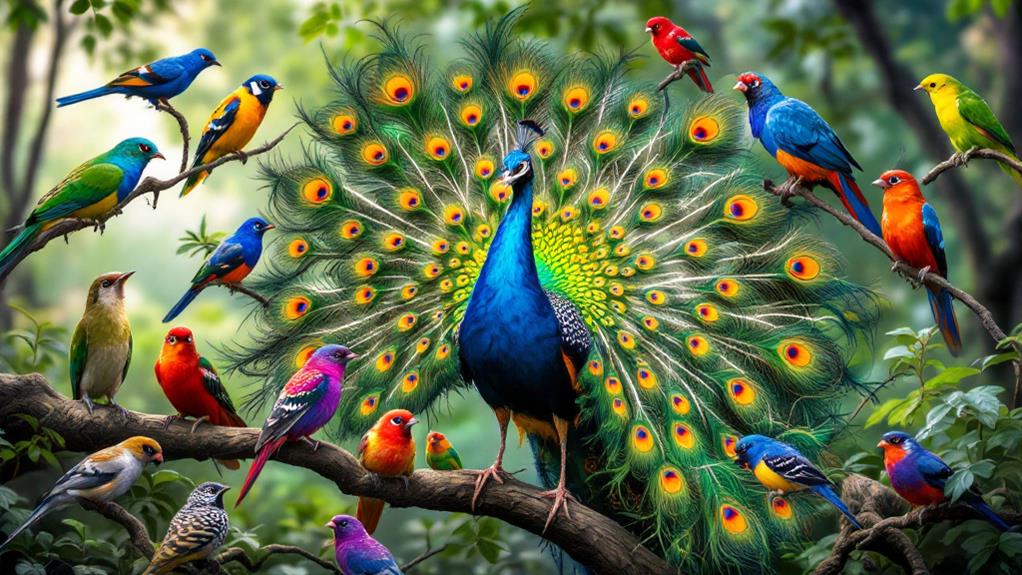
While nesting habits showcase birds' designer prowess, their colorful plumage reveals nature's artistic flair. You'll find that birds' feathers aren't just for show; they serve crucial functions in survival, communication, and reproduction. The mysteries of avian coloration continue to fascinate scientists and bird enthusiasts alike.
Iridescent coloring, found in hummingbirds and peacocks, isn't created by pigments but by the structure of feathers reflecting light. This phenomenon produces shimmering hues that change with viewing angles. Seasonal color changes are another intriguing aspect of bird plumage, with many species molting to display brighter colors during breeding seasons.
Some birds, like the ptarmigan, change color to blend with their environment. Flamingos' pink hue comes from their diet of algae and small crustaceans. Male birds are often more vibrant to attract mates and establish dominance. UV-reflective feathers allow birds to witness colors unseen by human eyes.
You'll uncover that the world of bird coloration is a complex tapestry of evolution, adaptation, and natural artistry. Each species tells a unique story through its plumage, inviting you to explore the vibrant diversity of avian life.
Surprising Bird Communication Methods
A concert of chirps, whistles, and songs fills the air as birds communicate in ways that often surprise us. While you're familiar with their melodious tunes, birds have a vast repertoire of communication methods that go beyond vocalizations.
Did you know that some birds are experts of vocal mimicry? Species like mockingbirds and lyrebirds can imitate not only other birds but also human-made sounds, from car alarms to chainsaws. This ability allows them to expand their communication range and even ward off predators.
Birds also use visual displays to convey messages. Male peacocks fan their colorful tail feathers to attract mates, while some hummingbirds perform elaborate aerial dances. In a rare and fascinating example, the nocturnal oilbird employs bioluminescent signaling. These cave-dwelling birds produce a faint glow to navigate in dark caverns and communicate with their peers.
Touch and vibration play roles in avian communication too. Woodpeckers drum on trees not just for food but also to mark territory and attract mates. Some species use infrasound, low-frequency sounds that humans can't hear, to communicate over long distances.
